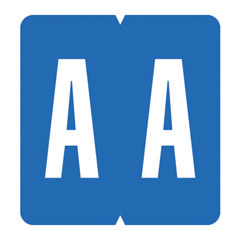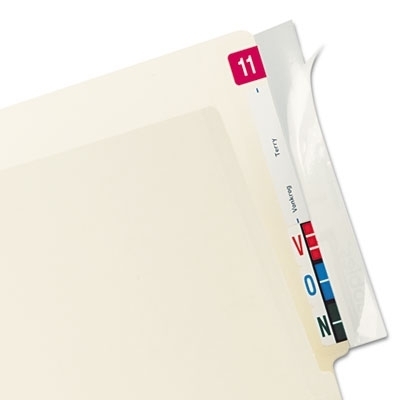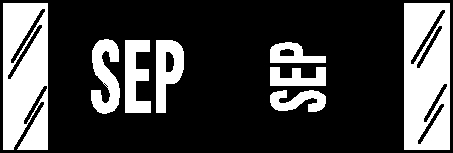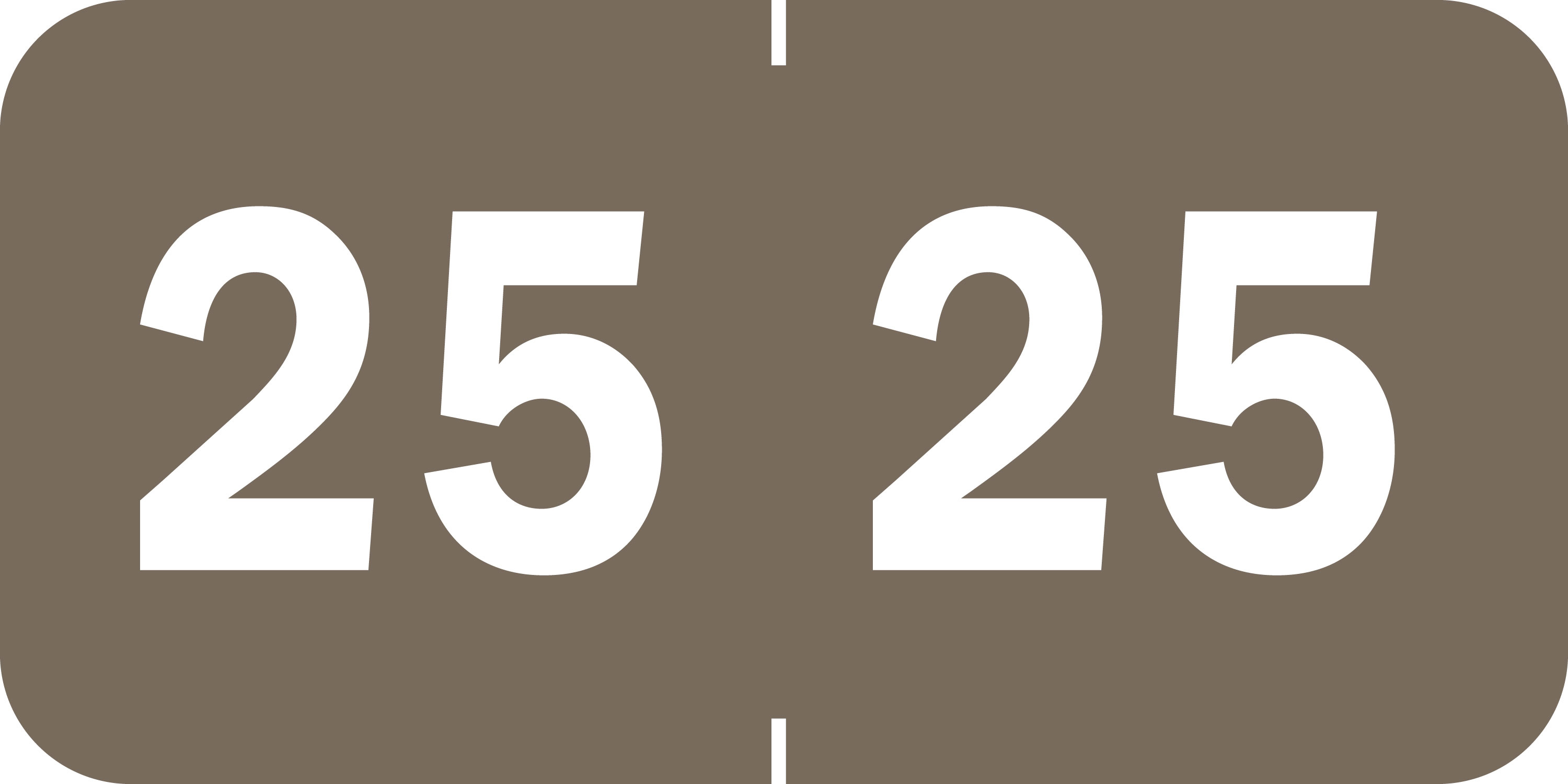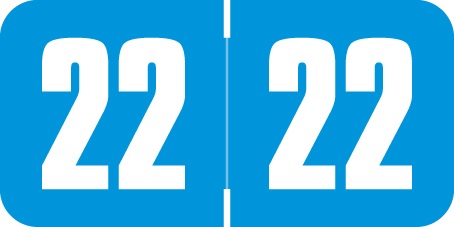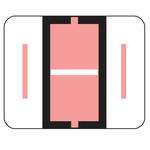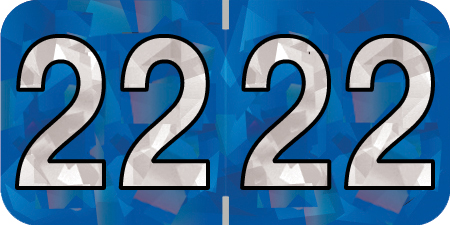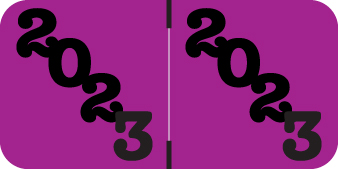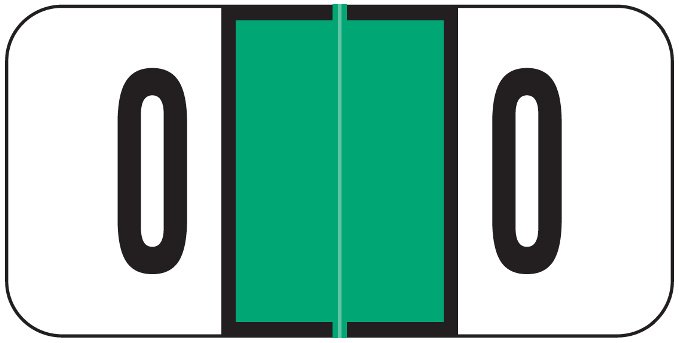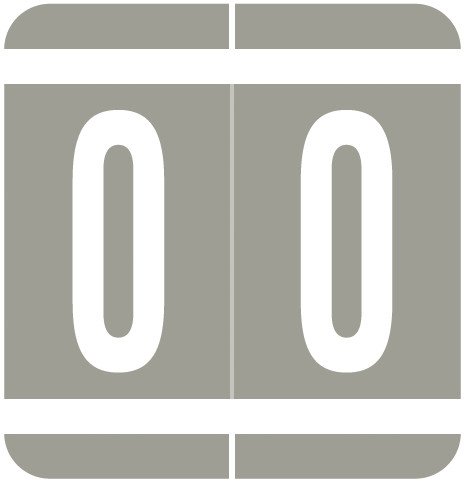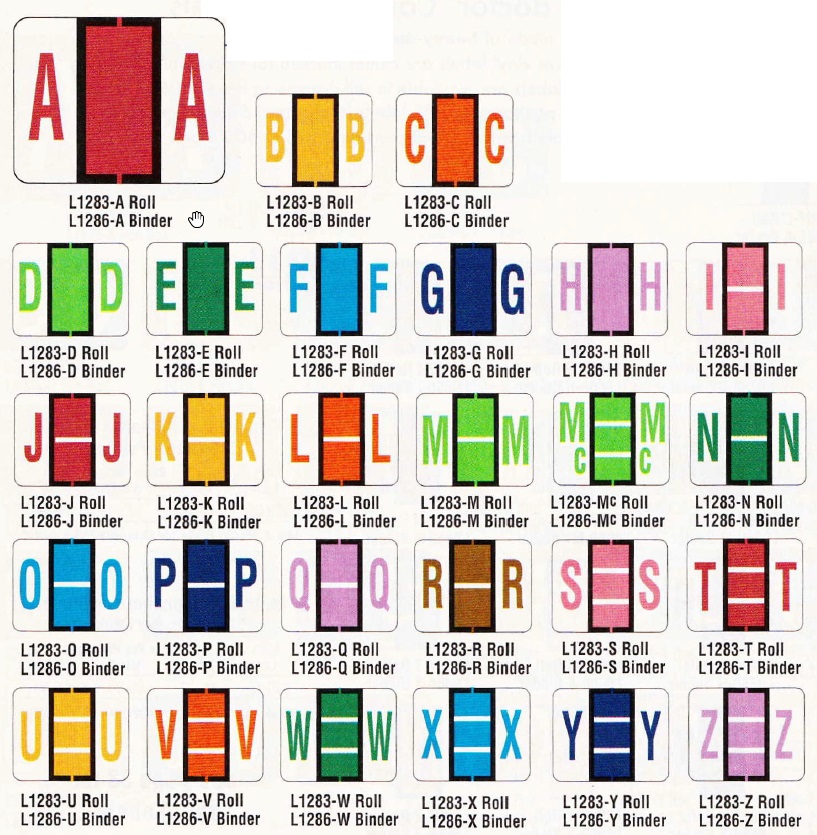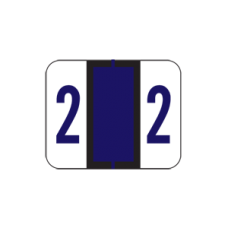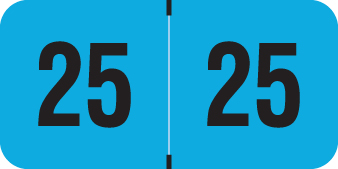-
Col R Tab
Tabbies COL'R'TAB Horizontal/Vertical Month Tabs, Black, 1/2"H x 1-1/2"W, "SEPTEMBER" 100/Pack
Retail:$8.00Our Price:$5.97(You Save: $2.03 )The Tabbies COL'R'TAB Horizontal/Vertical Month Tabs display "September" in Black. Each pack includes 100 laminated tabs sized 1/2" H x 1-1/2" W for reliable month labeling. Key Features: Month: September Color: Black Size: 1/2" H x 1-1/2" W Quantity:...
-
Tabbies
3/4" YR LBL '25' GRAY 500/RL TABBIES
Retail:$12.56Our Price:$9.37(You Save: $3.19 )3/4" YR LBL '25' GRAY 500/RL TABBIES
-
Col R Tab
AmeriFile Genuine Col'R'Tab 12000 Series Alpha Labels - 1 1/2 W x 1 H - Letter A - Blue - 100 Labels per Pack (10 Labels Per Sheet, 10 Sheets Per Pack)
Retail:$5.25Our Price:$4.53(You Save: $0.72 )AmeriFile Genuine Col'R'Tab 12000 Series Alpha Labels - Letter A (Blue) - 100 Labels per Pack. Pack contains 10 sheets of 10 labels each. Size 1" H x 1 1/2" W. Great for binder or sheet-fed workflows (sheet size 10" x 1 1/2"). Key Features: Letter A -...
-
FilingSupplies.com
Color Coded Laser/Inkjet File Folder Labels - Light Blue - 2/3" H x 3-7/16" W - 750 Labels Per Pack
Retail:$22.44Our Price:$16.75(You Save: $5.69 )Color Coded Laser/Inkjet File Folder Labels provide dependable adhesion and clean print quality, making them suitable for any office labeling task. Compatible with most label software, these labels are formatted for laser and inkjet printers. Each label...
-
Digi Color
Digi Color Numeric Label - DCNM Series (Rolls) - 8 - Purple
Retail:$12.45Our Price:$8.48(You Save: $3.97 )The Digi Color DCNM Series Numeric Labels feature the number "8" in Purple. Each roll includes 250 labels sized 1" H x 1-1/2" W for colorful numeric identification. Key Features: Letter: 8 Color: Purple Size: 1" H x 1-1/2" W Quantity: 250 per...
-
File Doctor
File Doctor Alphabetic Labels - FDAV Series (Rolls) S- Fl. Orange
Retail:$20.28Our Price:$13.93(You Save: $6.35 )Our File Doctor Alphabetic Label - Letter 'S' (Fluorescent Orange) is part of the FDAV Series. Supplied 500 per roll, each 1'' H x 1-1/4'' W label delivers bold visual coding to streamline alphabetic filing and speed up file access. Key Features: Letter...
-
FilingSupplies.com
HOLOGRAPHIC 2024 YELLOW Year Label 3/4"H X 1-1/2"W END TAB 500/ROLL
Retail:$17.37Our Price:$12.31(You Save: $5.06 )Holographic Yearband Label (Rolls) 500 - 2024 - Yellow - HYYM Series - Polylaminated - 3/4" H X 1-1/2" W
-
Safeguard
SAFEGUARD 2022 BLUE Year Label 3/4"H X 1-1/2"W END TAB 500/ROLL
Retail:$16.05Our Price:$11.73(You Save: $4.32 )2022 Safegaurd Yearband Label Color = Blue Label Size = 3/4" H x 1 1/2" W 500/Roll
-
Smead
Smead 67600 Seal and View Clear Label Protector, Size 3-1/2" W x 1-11/16" H before folding, 100 per Pack (67600) - 5 Packs - Total of 500
Retail:$48.65Our Price:$32.71(You Save: $15.94 )The Smead Seal and View Clear Label Protectors (67600) provide a protective layer over labels to prevent wear, smudging, and peeling. Each protector measures 1-11/16'' H x 3-1/2'' W before folding and comes in a 100-pack, helping extend the life of file...
-
Smead
Smead Alphabetic Labels - BCCR Series (Rolls) I- Pink
Retail:$15.00Our Price:$10.18(You Save: $4.82 )Alphabetic Labels I in Pink from the BCCR Series are available on a roll of 500, offering a solution for bulk alphabetical filing. Each label measures 1'' high by 1.25'' wide and features a bold black I on a pink background. The adhesive backing allows...
-
Smead
Smead Month Labels - ETS Series (Sheet) - February/Purple- 250/Pack
Retail:$6.66Our Price:$4.64(You Save: $2.02 )The Smead ETS Series Month Label displays "February" in Purple. Each laminated sheet includes 250 labels sized 1/2" H x 1" W, providing reliable month-based file identification. Key Features: Month: February Color: Purple Size: 1/2" H x 1" W Finish:...
-
TAB
TAB 2022 F ORANGE Year Label 3/4"H X 1-1/2"W END TAB 500/RL
Retail:$10.50Our Price:$7.50(You Save: $3.00 )TAB Yearband Label (Rolls of 500) - 2022 - F Orange - TPYV Series - Vinyl - Dimensions: 1/2" H x 1-1/8" W Dimensions: 1/2" H x 1-1/8" W
-
TAB
TAB Alphabetic Labels - TBAV Series (Rolls) C- Orange
Retail:$13.05Our Price:$8.57(You Save: $4.48 )The TBAV Series TAB Alphabetic Labels in Orange C are designed for compact alphabetical filing systems. Each label measures 0.5'' H x 1'' W and adheres to folders, binders, and dividers. With 500 labels per roll, these labels provide reliable...
-
Barkley
Barkley Systems Alphabetic Labels - FABKM Series (Rolls) M- Green
Retail:$15.75Our Price:$10.45(You Save: $5.30 )The Barkley Systems FABKM Series Alphabetic Labels are used to keep files arranged in alphabetical order for easy access. This roll provides labels with the letter M on a green background, offering a clear visual marker within filing systems. Each label...
-
FilingSupplies.com
HOLOGRAPHIC 2022 BLUE Year Label 3/4"H X 1-1/2"W END TAB 500/ROLL
Retail:$17.25Our Price:$12.31(You Save: $4.94 )Holographic Yearband Label (Rolls) 500 - 2022 - Blue - HBYM Series - Polylaminated - 3/4" H x 1-1/2" W
-
Jeter
JETER 2023 PURPLE Year Label 3/4"H X 1-1/2"W END TAB 500/ROLL
Retail:$12.30Our Price:$8.85(You Save: $3.45 )2023 /BLK -3/4"-500/BX
-
Jeter
JETER Numeric Label - 3000 Series (Rolls) - 0 - Lt. Green
Retail:$20.28Our Price:$13.93(You Save: $6.35 )The Jeter 3000 Series Numeric Labels feature the number "0" in Lt. Green. Each roll includes 500 labels sized 3/4" H x 1-1/2" W, designed for compact numeric organization. Key Features: Letter: 0 Color: Lt. Green Size: 3/4" H x 1-1/2" W Quantity: 500...
-
Sav-Tyme
Sav-Tyme/SFI Numeric Label - STNM Series (Rolls) - 1 - Blue
Retail:$28.47Our Price:$19.20(You Save: $9.27 )The Sav-Tyme/SFI STNM Series Numeric Labels feature the number "1" in Blue. Each roll includes 500 labels sized 1 1/2" H x 1 1/2" W for color-coded numeric classification. Key Features: Letter: 1 Color: Blue Size: 1 1/2" H x 1 1/2" W Quantity: 500 per...
-
TAB
TAB Compatible 84100 Series Alpha Labels - 'O' - Blue - 1" H x 1-1/2" W - Labels on Sheets - 100 Labels Per Pack (10 Labels Per Strip)
Retail:$7.04Our Price:$5.25(You Save: $1.79 )Our Alphabetic Color Code Labels are the perfect solution for efficient and organized file management. Each label is color-coded by letter, making it easy to identify, locate, and retrieve hard copy files at a glance. When applied in uniform positions...
-
GBS
VRE/GBS Alphabetic Labels - 8850 Series (Rolls) O- Gray
Retail:$16.20Our Price:$10.71(You Save: $5.49 )VRE/GBS Alphabetic Labels - 8850 Series (250 per Roll) O- Gray Dimensions: 1 3/10" H x 1 1/4" W
-
TAB
AmeriFile TAB Compatible Alpha Labels - Letter S - Pink - 1 1/4 W x 1 H - Sheet of 50
Our Price:$2.63The Amerifile TAB Compatible Alphabetic Label - Letter 'S' (Pink) comes on sheets of 50, offering the same high-quality laminated construction in a compact, ready-to-use format for smaller file collections. Key Features: Letter 'S' Pink Coding: Keeps...
-
File Doctor
AmeriFile the File Doctor Compatible Numeric Labels - Number 2 - blue - 1 1/4 W x 1 H - Roll of 500
Retail:$17.33Our Price:$13.45(You Save: $3.88 )The AmeriFile File Doctor Compatible Numeric Label displays the number "2" in Blue. Each roll includes 500 labels, sized 1" H x 1-1/4" W, for color-coded numeric file identification. Key Features: Number: 2 Color: Blue Size: 1" H x 1-1/4" W Quantity:...
-
Col R Tab
Col 'R' Tab Alpha Color Coded Labels - 82000 Series - Letter "F" - Green - 1" H x 1-1/2" W - 100/Pack
Retail:$6.07Our Price:$4.53(You Save: $1.54 )These alpha wrap-around labels provide letter-specific colors for faster file identification. Uniform placement creates a clear color/block pattern across shelves. Each label includes a clear laminate and a center slit. Labels measure 1'' H x 1.5'' W...
-
Jeter
JETER 2026 GRAY Year Label 3/4"H X 1-1/2"W END TAB 500/ROLL
Retail:$12.30Our Price:$8.85(You Save: $3.45 )2026 Year Label - Jeter - 3/4" x 1-1/2" - - Laminated - 500/Roll
-
FilingSupplies.com
PMA FLUORESCENT 2025 FL BLUE Year Label 3/4"H X 1-1/2"W END TAB 500/ROLL
Retail:$12.20Our Price:$10.52(You Save: $1.68 )Organize your files efficiently with these 2025 Fl Blue year labels. Each label measures Fl Blue inch, perfect for easy identification and categorization. Comes in a box of 500 labels, designed for durability and long-lasting use in any filing system...
-
Reynolds and Reynolds
Reynolds and Reynolds Numeric Label (Rolls) - 2 - Dk. Blue
Retail:$19.08Our Price:$12.68(You Save: $6.40 )The Reynolds & Reynolds Numeric Labels feature the number "2" in Dk. Blue. Each roll includes 500 labels sized 7/8" H x 1-5/8" W for professional numeric indexing. Key Features: Letter: 2 Color: Dk. Blue Size: 7/8" H x 1-5/8" W Quantity: 500 per...
-
Smead
Smead 2023 Year Label - PURPLE - 1/2" H x 1" W - Laminated - 500/Roll
Retail:$9.30Our Price:$6.92(You Save: $2.38 )2023 PURPLE 1/2 500
-
Smead
Smead Alphabetic Labels - NCC Series (Sheet) M&Z- Lt. Green
Retail:$6.90Our Price:$4.64(You Save: $2.26 )Alphabetic Labels MZ in Light Green from the NNC Series are provided on sheets of 100 labels for larger label applications. Each label measures 1.156'' high by 3.625'' wide, making them suitable for file drawers or large folder tabs. Bold black MZ...
-
TAB
TAB Alphabetic Labels - 1286 Series (Sheet) M- Lt. Green
Retail:$4.77Our Price:$3.30(You Save: $1.47 )The 1286 Series TAB Alphabetic Labels in Light Green M are sheet labels designed for alphabetical file organization. Each label measures 1'' H x 1.25'' W. Each sheet contains 50 self-adhesive labels suitable for offices, classrooms, and home filing...
-
Kardex
Tabbies Kardex Compatible Solid Color Designator Labels, Black, 3/8"H x 1-7/16"W, 1,000 Labels/Roll
Retail:$13.70Our Price:$10.22(You Save: $3.48 )Tabbies Kardex Compatible Solid Color Designator Labels in Black deliver strong contrast for indexing. Each roll includes 1,000 labels sized 3/8" H x 1-7/16" W for use with Kardex filing components. Key Features: Color: Black Size: 3/8" H x 1-7/16"...
LABELS
Build a clear, color‑coded filing system with alpha, numeric, yearband, and month labels designed for fast indexing and fewer misfiles. Choose rolls or sheets to match your workflow, then apply to top‑tab or end‑tab folders for instant clarity across cabinets and shelves.
Prefer to print in‑house? Use standard file‑folder label sizes with ready‑made templates to create clean, consistent tabs for departments, clients, or patient charts—easy to read, easy to maintain.
Enjoy bulk pricing and free shipping on orders over $99 (contiguous US; exclusions apply).


